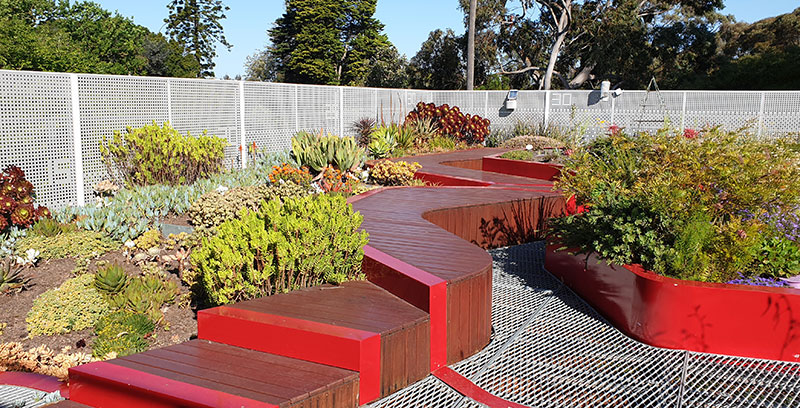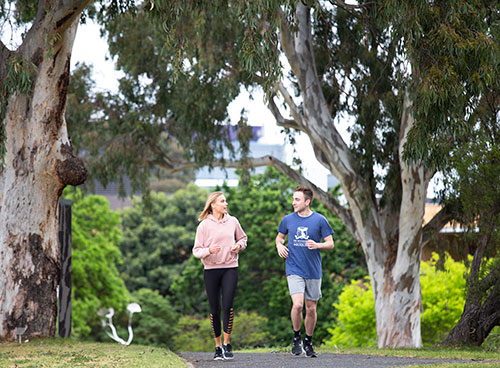Plantable area on campus
Measuring and maintaining plantable area on campus ensures there are lush green spaces for our environment and community to enjoy long into the future. Plantable area is being measured as part of Metric 1 of the Biodiversity Baseline Data Project.

The Biodiversity Baseline Data Project
Metric 1 is a measurement of any ground area where plants can grow and includes garden beds, lawns, container pots, green roofs and ponds. These areas are important for supporting biodiversity on campus.
The metric forms part of the University’s Biodiversity Baseline Data Project which facilitates the University’s ‘no net loss’ of biodiversity policy by measuring biodiversity through seven preliminary metrics. These baseline measurements will be compared to in future years to help the University track whether biodiversity has been lost or gained on campus.
Assessing the quality of plantable area
Plantable area comes in a variety of forms, and therefore quality.
Container pots and green roofs are useful in transforming roofs and courtyards into areas that support plant life, but with limited soil depths these areas have a reduced potential to support flora and fauna.
To ensure high quality plantable area is maintained, the University has incorporated a quality measure into Metric 1. This quality measure assigns a higher value to some areas, like those classified as remnant vegetation, while still acknowledging the value other forms of plantable area (e.g. green roofs and container pots) deliver to our world-class campuses.

Green spaces: Benefiting us and the environment
More plantable area on campus means more lush leafy green spaces for our community to enjoy. Urban green spaces are important for promoting mental and physical health through stress alleviation and supporting physical activity.
These areas also benefit the environment by reducing heat, air and noise pollution, mitigating climate change impacts through carbon sequestration and providing habitat for biodiversity. As our cities expand, urban green spaces provide critical habitat for those species found within them.
Plantable area at Burnley campus
Former Master of Spatial engineering student and Sustainability Intern, Srilakshmi Gurunathan, used mapping software to measure plantable area at the University’s Burnley campus. Srilakshmi’s analysis found an impressive 62% of the campus area to be plantable!
Our Burnley campus is situated within the heritage-listed Burnley Gardens, which supports a rich diversity of garden types and ecosystems. These include Native Grasslands Garden, Native Rainforest Garden, Native Garden Ponds and rooftop gardens, all of which contributed to our Burnley campus’ plantable area.
Completion of Metric 1 at the University’s remaining campuses is projected for end of 2022.